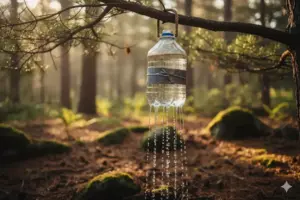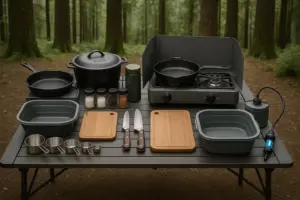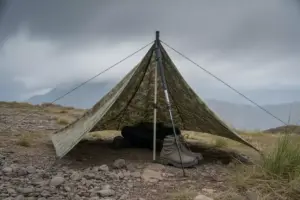Capturing the Wild: How to Choose the Best Camera for Wildlife Photography
Picture this: you’re crouched in tall grass at dawn, heart racing as a majestic lion approaches just 50 feet away. You raise your camera, frame the perfect shot, and… your equipment fails you. The autofocus hunts desperately, the image is blurry, and the moment is lost forever. This scenario haunts every wildlife photographer, but it doesn’t have to be your reality.
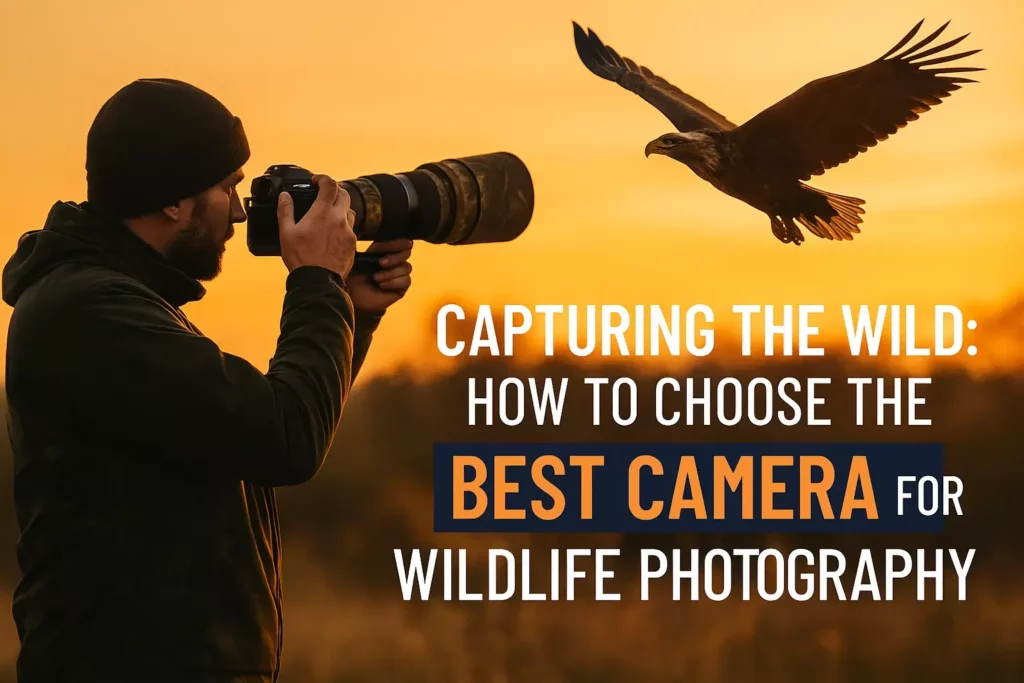
Wildlife photography demands more from your camera than any other genre. From lightning-fast reflexes to weather-resistant builds, the right equipment can mean the difference between capturing breathtaking images and returning home with memory cards full of disappointment. Whether you’re tracking birds in your backyard or embarking on an African safari, choosing the best camera for wildlife photography is crucial to your success.
Key Takeaways
- Camera type matters: DSLR and mirrorless cameras offer the speed and image quality needed for wildlife photography
- Autofocus performance: Look for cameras with advanced tracking systems and fast, accurate autofocus capabilities
- Lens compatibility: Consider the camera system’s telephoto lens options, as reach is essential for wildlife photography
- Weather sealing: Outdoor conditions demand cameras that can withstand dust, moisture, and temperature extremes
- Budget considerations: Excellent wildlife cameras exist across all price ranges, from entry-level to professional models
Understanding Wildlife Photography Camera Requirements
Wildlife photography presents unique challenges that standard cameras often struggle to handle. Unlike portrait or landscape photography, wildlife subjects are unpredictable, often moving quickly, and typically require significant magnification to capture compelling images.
Essential Camera Features for Wildlife Photography
Speed and Performance 📸
Wildlife doesn’t wait for slow cameras. The best cameras for wildlife photography offer:
- Fast burst rates (8+ frames per second)
- Quick autofocus acquisition (under 0.1 seconds)
- Minimal shutter lag
- Responsive controls for quick adjustments
Image Quality and Sensor Size
Larger sensors generally provide better image quality, especially in challenging lighting conditions common during golden hour wildlife encounters. Full-frame sensors excel in low light, while APS-C sensors offer a “crop factor” that effectively increases your lens reach.
Weather Protection
Nature photography often means exposure to harsh elements. Look for cameras with:
- Weather sealing against dust and moisture
- Temperature resistance for extreme conditions
- Durable construction to withstand outdoor use
DSLR vs Mirrorless: What Is the Best Camera Type for Wildlife Photography?
The debate between DSLR and mirrorless cameras continues to evolve, with both offering distinct advantages for wildlife photography.
DSLR Advantages
Battery Life 🔋
DSLRs typically offer 2-3 times longer battery life than mirrorless cameras, crucial during long wildlife photography sessions in remote locations where charging isn’t possible.
Lens Selection
Established DSLR systems, particularly Canon and Nikon, offer extensive telephoto lens lineups developed over decades.
Optical Viewfinder
Some photographers prefer the natural view and zero lag of optical viewfinders, especially when tracking fast-moving subjects.
Mirrorless Advantages
Size and Weight
Mirrorless cameras are generally lighter and more compact, reducing fatigue during long hiking sessions to reach wildlife locations.
Electronic Viewfinder Benefits
- Real-time exposure preview
- Focus peaking and magnification
- Histogram display
- Silent shooting modes for skittish animals
Advanced Autofocus
Modern mirrorless cameras often feature more sophisticated autofocus systems with animal eye detection and subject tracking capabilities.
Top Camera Categories for Wildlife Photography
Entry-Level Options ($500-$1,000)
Canon EOS Rebel T8i
- 24.1MP APS-C sensor
- 7 fps burst rate
- Dual Pixel autofocus
- Weather-resistant build
Nikon D5600
- 24.2MP APS-C sensor
- 5 fps burst rate
- 39-point autofocus system
- Articulating LCD screen
Mid-Range Powerhouses ($1,000-$2,500)
Canon EOS 90D
- 32.5MP APS-C sensor
- 10 fps burst rate
- 45-point cross-type autofocus
- 4K video capability
Sony Alpha a6600
- 24.2MP APS-C sensor
- 11 fps burst rate
- Real-time animal eye autofocus
- In-body image stabilization
Professional Grade ($2,500+)
Canon EOS R5
- 45MP full-frame sensor
- 12 fps mechanical, 20 fps electronic
- Dual Pixel CMOS AF II
- 8K video recording
Nikon D850
- 45.7MP full-frame sensor
- 7 fps burst rate (9 fps with grip)
- 153-point autofocus system
- Exceptional dynamic range
Lens Considerations: Reaching Your Subjects
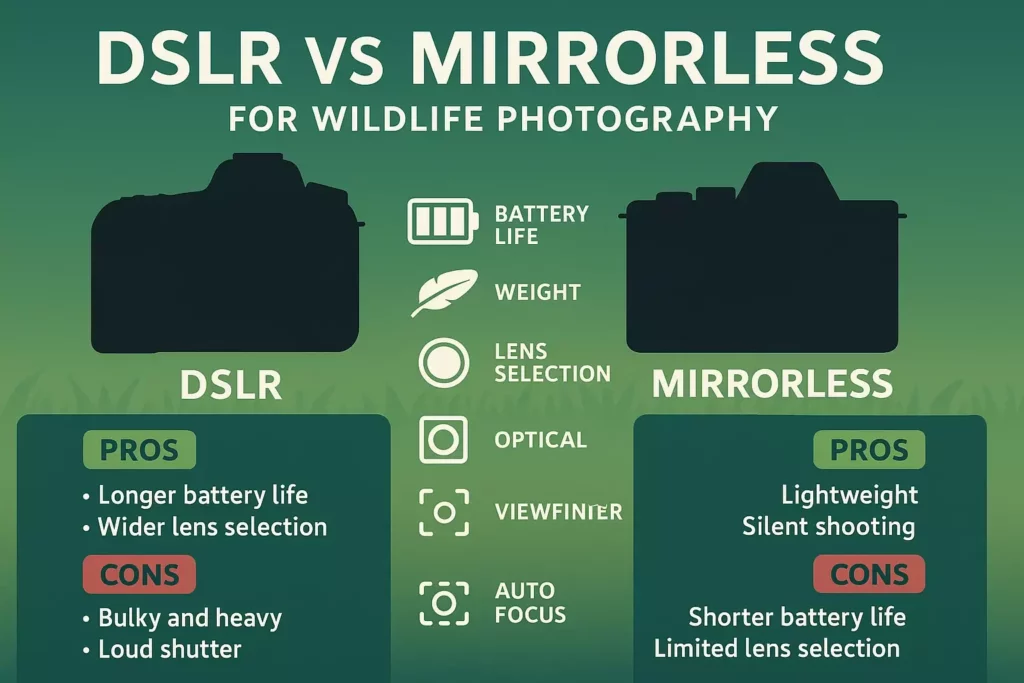
The lens often matters more than the camera body in wildlife photography. Telephoto reach is essential, as most wildlife subjects require significant magnification.
Recommended Focal Lengths
- Birds: 400mm-600mm minimum
- Large mammals: 200mm-400mm
- Small mammals: 300mm-500mm
- Insects/macro wildlife: 100mm-200mm macro lenses
Crop Factor Advantage
APS-C sensors provide a 1.5x-1.6x crop factor, effectively increasing your lens reach. A 300mm lens on an APS-C camera provides the equivalent field of view of a 450-480mm lens on full-frame.
Camera Settings and Techniques for Wildlife Success
Autofocus Modes
Single Point AF: Precise control for stationary subjects
Zone/Group AF: Balanced approach for unpredictable movement
Wide Area AF: Maximum coverage for erratic subjects
Shooting Modes
Shutter Priority (Tv/S): Control motion blur and freeze action
Manual Mode: Complete control in consistent lighting
Auto ISO: Maintain optimal shutter speeds automatically
Burst Mode Strategy
Use continuous shooting modes strategically:
- High-speed burst for action sequences
- Medium burst for behavioral shots
- Single shot for composed portraits
Budget Considerations and Value Recommendations
Wildlife photography equipment can be expensive, but excellent results are achievable across all budget ranges.
Budget-Conscious Approach ($800-$1,500 total)
Start with a capable APS-C camera body and invest in a quality telephoto lens. Consider:
- Used professional lenses from previous generations
- Third-party lens manufacturers like Sigma and Tamron
- Lens rental services for expensive telephoto lenses
Mid-Range Investment ($2,000-$4,000)
This budget allows for a high-quality camera body and a versatile telephoto zoom lens, providing excellent image quality and performance.
Professional Setup ($5,000+)
Professional wildlife photography setups include full-frame cameras, multiple telephoto lenses, and specialized accessories for demanding conditions.
Essential Accessories for Wildlife Photography
Beyond the camera and lens, several accessories enhance wildlife photography success:
Tripods and Monopods 🦵
Support is crucial for long telephoto lenses and extended shooting sessions.
Extra Batteries and Memory Cards
Wildlife photography often involves long days in remote locations where running out of power or storage isn’t an option.
Lens Filters
- UV filters for lens protection
- Polarizing filters to reduce glare and enhance colors
- Neutral density filters for creative effects
When planning extended wildlife photography trips, proper preparation is essential. Consider reviewing guides on how to pack your backpack for camping to ensure you can carry all your camera gear efficiently during multi-day excursions.
Maintenance and Care in the Field
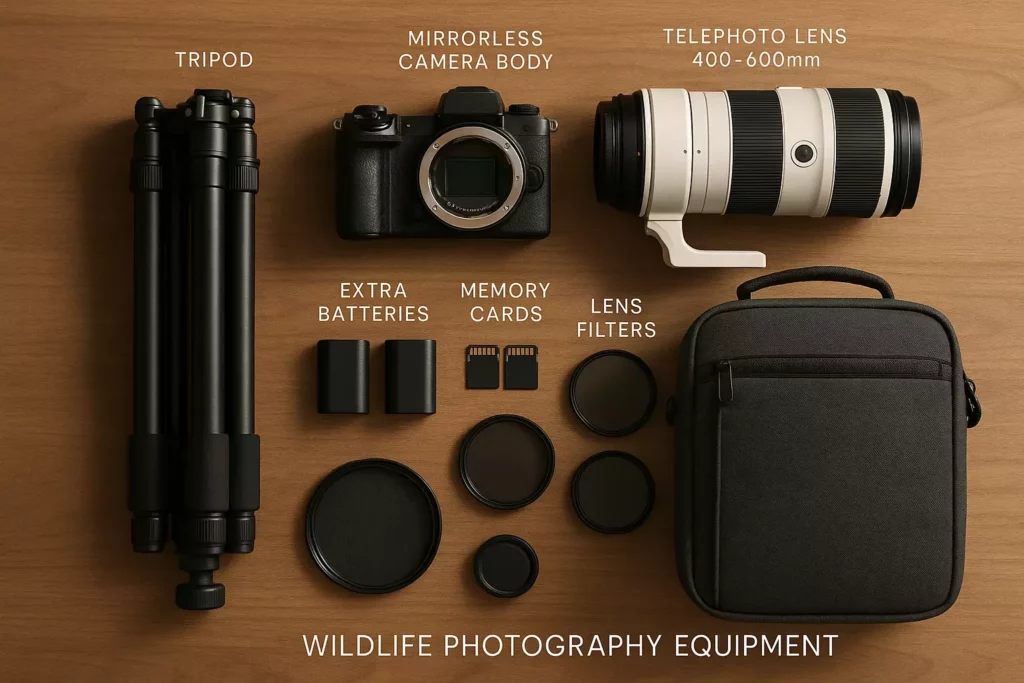
Wildlife photography often takes place in challenging environments that can damage equipment if proper care isn’t taken.
Protecting Your Gear
Dust and Sand Protection
- Use lens hoods and UV filters
- Keep equipment in sealed bags when not in use
- Clean sensors and lenses regularly
Moisture Management
- Use silica gel packets in camera bags
- Allow gradual temperature adjustment to prevent condensation
- Consider rain covers for extended outdoor shooting
Temperature Extremes
Cold weather can drain batteries quickly and cause condensation issues. Warm weather can cause equipment overheating and expansion problems.
For photographers planning wildlife expeditions in various weather conditions, understanding cool weather clothes for camping can help ensure personal comfort while protecting valuable camera equipment.
Advanced Features to Consider
Image Stabilization
In-Body Stabilization (IBIS): Works with any lens
Lens-Based Stabilization: Often more effective for telephoto lenses
Dual Stabilization: Combines both systems for maximum effectiveness
Video Capabilities
Modern wildlife photography often includes video components. Consider cameras offering:
- 4K recording for high-quality footage
- High frame rates for slow-motion effects
- External microphone inputs for better audio
Connectivity Features
Wi-Fi and Bluetooth: Enable quick image sharing and remote camera control
GPS Tagging: Automatically records shooting locations
Smartphone Apps: Provide advanced remote control capabilities
Building Your Wildlife Photography Kit
Starter Kit Recommendations
- Camera Body: Canon EOS 90D or Sony a6600
- Primary Lens: 100-400mm telephoto zoom
- Support: Lightweight carbon fiber tripod
- Accessories: Extra batteries, memory cards, lens cleaning kit
Intermediate Kit Upgrades
- Second Lens: 70-200mm f/2.8 for versatility
- Teleconverter: 1.4x or 2x to extend reach
- Flash System: For fill light and macro work
- Weather Protection: Rain covers and protective filters
Professional Kit Considerations
- Dual Camera Bodies: Backup and different lens combinations
- Prime Telephoto Lenses: 400mm, 500mm, or 600mm f/4-f/5.6
- Specialized Accessories: Gimbal heads, camouflage gear, remote triggers
When assembling a comprehensive wildlife photography kit, organization becomes crucial. The principles of building your first aid kit apply similarly to camera gear organization—systematic packing ensures you can quickly access the right equipment when wildlife opportunities arise.
Common Mistakes to Avoid
Equipment-Related Errors
Underestimating Lens Importance
Many beginners focus solely on camera bodies while neglecting lens quality. Often, a better lens on a modest camera produces superior results to an expensive camera with a poor lens.
Ignoring Weather Sealing
Wildlife photography frequently occurs in challenging conditions. Cameras without weather protection may fail when you need them most.
Overlooking Battery Life
Cold weather and continuous autofocus drain batteries rapidly. Always carry spares and keep them warm.
Technical Mistakes
Using Inappropriate Autofocus Modes
Different wildlife situations require different autofocus strategies. Practice switching between modes quickly.
Neglecting Shutter Speed
Blurry images from camera shake or subject movement are common beginner mistakes. Understand the relationship between focal length and minimum shutter speed.
Poor Field Techniques
Approaching wildlife requires patience and understanding of animal behavior. Rushing often results in missed opportunities and stressed animals.
🦅 Wildlife Camera Finder Tool
Seasonal Considerations for Wildlife Photography
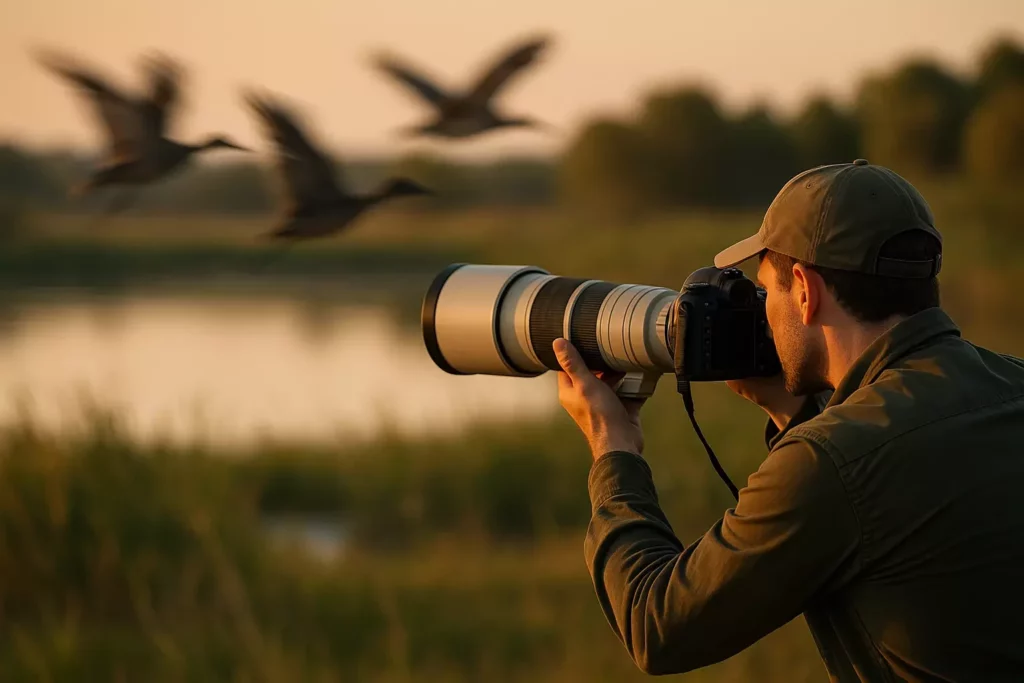
Wildlife behavior and photography opportunities change dramatically with the seasons, requiring different camera considerations and techniques.
Spring Photography Challenges
Weather Variability: Spring weather can be unpredictable, requiring cameras with good weather sealing and quick settings adjustments.
Nesting Behavior: Birds become more active and approachable during nesting season, making this ideal for wildlife photography.
Equipment Considerations: Lighter setups work well for extended hiking to reach spring wildlife locations.
Summer Wildlife Photography
Heat Management: Extended summer shooting requires cameras that handle high temperatures without overheating.
Early Morning Sessions: The best wildlife activity occurs during cooler morning hours, demanding good low-light performance.
Hydration and Protection: Long summer sessions require proper planning, similar to camping with kids family camping where preparation prevents problems.
Fall Migration Opportunities
Fall offers exceptional wildlife photography opportunities as animals prepare for winter and migrate to new areas.
Extended Shooting Days: Cooler temperatures allow for longer photography sessions without equipment overheating.
Dramatic Lighting: Fall’s lower sun angles create beautiful lighting conditions for wildlife photography.
Winter Wildlife Challenges
Battery Performance: Cold weather dramatically reduces battery life, requiring multiple spares and warming strategies.
Condensation Issues: Moving equipment between cold outdoor and warm indoor environments can cause damaging condensation.
Limited Daylight: Shorter winter days require cameras with excellent low-light performance.
Post-Processing Considerations
The camera choice impacts post-processing workflow and final image quality significantly.
File Format Decisions
RAW vs JPEG: Wildlife photography benefits from RAW files’ flexibility, especially for exposure and color corrections.
File Size Management: High-resolution cameras produce large files requiring substantial storage and processing power.
Camera-Specific Advantages
Canon Color Science: Known for pleasing skin tones and natural color reproduction
Nikon Dynamic Range: Excellent shadow and highlight recovery capabilities
Sony Low Light: Superior high-ISO performance for challenging lighting conditions
Building Long-Term Skills and Equipment
Wildlife photography is a journey requiring both skill development and gradual equipment upgrades.
Skill Development Priorities
Animal Behavior Understanding: The best camera won’t help if you don’t understand your subjects’ behavior patterns.
Technical Mastery: Learn your camera’s controls instinctively to react quickly to wildlife opportunities.
Fieldcraft Skills: Approach techniques, camouflage, and patience are as important as equipment quality.
Equipment Evolution Path
Phase 1: Entry-level camera with kit lens and basic telephoto
Phase 2: Better telephoto lens and accessories
Phase 3: Professional camera body upgrade
Phase 4: Specialized lenses and advanced accessories
For photographers planning to combine wildlife photography with camping adventures, understanding family camping tip activities for kids can help balance photography time with family engagement during outdoor trips.
Future-Proofing Your Investment
Technology evolves rapidly, but smart purchasing decisions can extend equipment lifespan significantly.
Lens Investment Priority
Lenses typically retain value better than camera bodies and often work across multiple camera generations. Investing in high-quality lenses first provides better long-term value.
System Considerations
Lens Ecosystem: Choose camera systems with extensive telephoto lens options
Upgrade Paths: Consider manufacturers’ roadmaps for future camera and lens releases
Resale Value: Some brands maintain value better in the used market
Technology Trends
Mirrorless Advancement: The industry continues shifting toward mirrorless systems
AI-Powered Features: Autofocus and subject recognition continue improving
Video Integration: Modern wildlife photography increasingly includes video components
Safety and Ethical Considerations
Wildlife photography requires responsible practices that prioritize animal welfare and photographer safety.
Ethical Guidelines
Minimum Distance: Respect wildlife by maintaining appropriate distances
Habitat Protection: Avoid damaging vegetation or disturbing nesting areas
Feeding Prohibition: Never feed wildlife to attract them for photography
Safety Protocols
Emergency Preparedness: Carry communication devices and emergency supplies
Weather Awareness: Monitor conditions and have exit strategies
Wildlife Hazards: Understand dangerous animals in your photography areas
When venturing into remote areas for wildlife photography, having a comprehensive new bushcraft survival kit for camping ensures you’re prepared for unexpected situations while pursuing the perfect wildlife shot.
Conclusion
Choosing the best camera for wildlife photography involves balancing multiple factors including budget, experience level, target subjects, and shooting conditions. While expensive professional equipment offers advantages, excellent wildlife images are achievable with mid-range cameras when paired with quality lenses and proper technique.
The most important factors to consider are:
✅ Autofocus performance for tracking moving subjects
✅ Telephoto lens compatibility for reaching distant wildlife
✅ Weather sealing for outdoor durability
✅ Burst rate capabilities for capturing action sequences
✅ Battery life for extended field sessions
Remember that camera equipment is just one component of successful wildlife photography. Developing field skills, understanding animal behavior, and practicing ethical photography techniques are equally important for creating compelling wildlife images.
Your Next Steps:
- Define your budget and primary wildlife subjects
- Research camera and lens combinations within your price range
- Visit camera stores to handle equipment before purchasing
- Consider renting gear for expensive items before buying
- Start with basic equipment and upgrade gradually as skills develop
Whether you’re photographing backyard birds or planning African safari adventures, the right camera choice will help you capture the wild beauty that surrounds us. Focus on learning your equipment thoroughly, practice regularly, and always prioritize the welfare of your wildlife subjects over getting the perfect shot.



